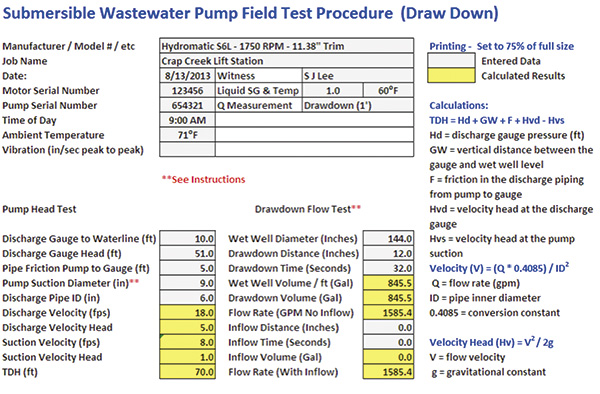First of Two Parts
05/12/2014
All pumps should be tested regularly, but wastewater pumps are at the top of the list because they are especially susceptible to changing system conditions. Even if a pump operates at its best efficiency point (BEP) at startup, many conditions will change during its lifetime of operation, including:
- Malfunctioning gate and check valves
- Partial blockages in the pipeline
- Air accumulation at a high point
- New branches entering a force main
 Figure 1. The pump test portion of the spreadsheet
Figure 1. The pump test portion of the spreadsheet
